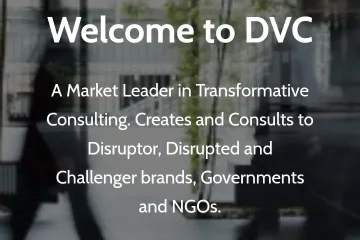In the dynamic landscape of entrepreneurship, one of the pivotal decisions faced by business founders is how to finance their venture. The age-old debate between bootstrapping and seeking external funding presents entrepreneurs with a strategic dilemma. Each approach comes with its set of merits, and choosing the right path requires careful consideration of the business’s nature, goals, and the entrepreneur’s risk tolerance. Let’s delve into the relative merits of bootstrapping and external funding:
Bootstrapping:
1. Autonomy and Control:
– Pro: Bootstrapping empowers entrepreneurs to retain full control over their business. Decisions are made autonomously, allowing for agility in responding to market changes.
– Con: Limited resources might slow down growth, and the entrepreneur shoulders the entire financial burden.
2. Sustainable Growth:
– Pro: Growing organically through bootstrapping promotes sustainable development. Businesses focus on generating revenue from the start, fostering financial discipline.
– Con: The pace of growth may be slower compared to externally funded counterparts.
3. Resourcefulness and Creativity:
– Pro:Limited resources spark creativity and resourcefulness. Entrepreneurs learn to make the most of what they have, fostering a resilient and adaptable mindset.
– Con: Constraints might hinder ambitious projects or hinder rapid scaling.
4. Reduced Financial Pressure:
– Pro: Without the pressure of repaying loans or meeting investor expectations, entrepreneurs can navigate challenges with less financial stress.
– Con:Lack of external funds may limit the ability to seize significant market opportunities.
External Funding:
1. Accelerated Growth:
– Pro: External funding provides an injection of capital that accelerates growth. Businesses can invest in marketing, infrastructure, and talent acquisition at a faster pace.
– Con: Rapid growth can lead to operational challenges if not managed effectively.
2. Access to Expertise:
– Pro: Investors often bring valuable industry expertise and connections, contributing to strategic decision-making.
– Con: Aligning visions with investors and relinquishing some control may be a trade-off.
3. Mitigating Risks:
– Pro:External funding can provide a safety net, especially during economic downturns, offering a buffer against unforeseen challenges.
– *Con:* Dependence on external funds may lead to vulnerability during market uncertainties.
4. Scaling Possibilities:
– Pro:Well-funded businesses have the potential for rapid scaling, entering new markets, and outpacing competitors.
– Con: Unchecked scaling without a solid foundation may lead to inefficiencies or operational issues.
Conclusion:
Ultimately, the decision between bootstrapping and external funding is nuanced and dependent on the unique circumstances of each entrepreneur and business. Some entrepreneurs thrive in the autonomy and resourcefulness of bootstrapping, while others find the strategic advantages and growth potential of external funding indispensable.
The key lies in understanding the business’s immediate needs, long-term goals, and the entrepreneur’s risk appetite. In some cases, a hybrid approach, combining elements of both bootstrapping and external funding, may offer a balanced strategy. Whichever path is chosen, the journey of entrepreneurship is marked by continuous learning, adaptability, and the resilience to navigate challenges on the road to success.DVC Consultants assumes a crucial advisory role for disruptor and challenger brands, particularly in their initial start-up phase. Offering more than traditional consulting, DVC’s services provide tailored guidance and strategic insights to brands aiming to challenge established markets and redefine industry norms. The focus lies on strategic advisory services, financial guidance, operational excellence, innovation, branding, and fostering a long-term partnership to navigate the dynamic landscape of disruptive entrepreneurship.
Management Consultants
AI Enabling AI: A Comprehensive Examination of Kunavv.ai’s Innovative Approach
Tom Biegala on AI Enablers A quote from a Forbes Magazine article- There are nine AI startups that VCs wish founders would pitch them No 9 – Tom Biegala, of Bison Ventures Says “AI also Read more…




0 Comments